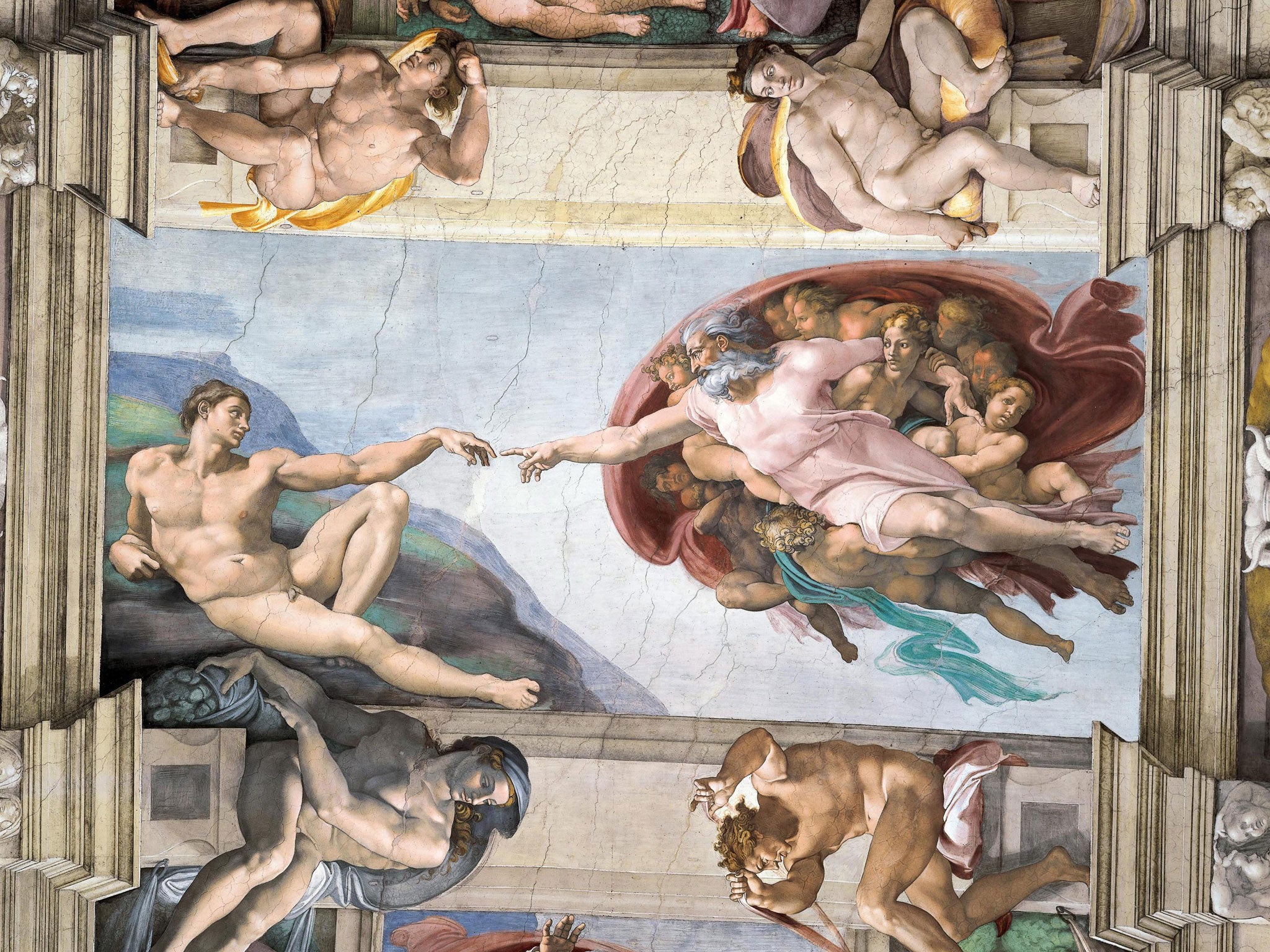Michelangelo hid female anatomy symbols in Sistine Chapel ceiling painting, researchers claim
'We can infer that the real meaning of these skulls may be related to the figure of the uterus'

Over 500 years later and secrets hidden within the Sistine Chapel are only just being discovered today. A team of academics analysing the artwork have claimed Michelangelo hid pagan notions of female sexuality through various symbols.
The team has deduced that the reoccurring image of a ram, featured eight times across the fresco, represent the female reproductive system; the ram’s skull and horns closely match the anatomy of a uterus.
“We can infer that the real meaning of these skulls may be directly related to the figure of the female internal anatomy (the uterus and uterine tubes),” the researchers from various Brazilian universities claim in their newly-published paper in the journal of Clinical Anatomy, picked up by The Telegraph.
“We believe that the position in which the tip of the triangles (male symbol) is lined with the skulls (the womb) may in fact represent direct sexual contact between male and female symbols.”
The report details how Michelangelo was likely trying to subvert the common practices of the Roman Catholic Church; at the time, they were still debating whether women had souls. They also detail how the artist concealed the imagery as the female form was too often neglected in religious artwork.
As well as the rams, the researchers noted how in the segment titled The Creation of Eve, the First Woman holds her arms out in a V-shape.
“According to classical descriptions, a triangle pointing upwards is the pagan symbol for the male (a rudimentary phallus), while when pointing down it is the pagan symbol for the female,” the report states.
“In the exact centre of the Sistine Chapel’s ceiling, Michelangelo may have placed a notorious pagan female symbol.”
The paper, titled The hidden symbols of female anatomy in Michelangelo Buonarroti's ceiling in the Sistine Chapel postulates how “Michelangelo concealed the symbols associated with female anatomy because he knew that the Pope would never favour such representations.”
Accidental Renaissance paintings
Show all 5There are also various other examples of hidden symbols in his artwork: “Like other Renaissance artists of his time, Michelangelo often introduced anatomic figures, sexual innuendoes and rude insults to patrons without them being aware.”
In 2009, a revaluation with regards Michelangelo’s last artwork, The Crucifixion of Saint Peter, was made, analysts concluding that a hidden self-portrait was in the painting.
Subscribe to Independent Premium to bookmark this article
Want to bookmark your favourite articles and stories to read or reference later? Start your Independent Premium subscription today.

Join our commenting forum
Join thought-provoking conversations, follow other Independent readers and see their replies